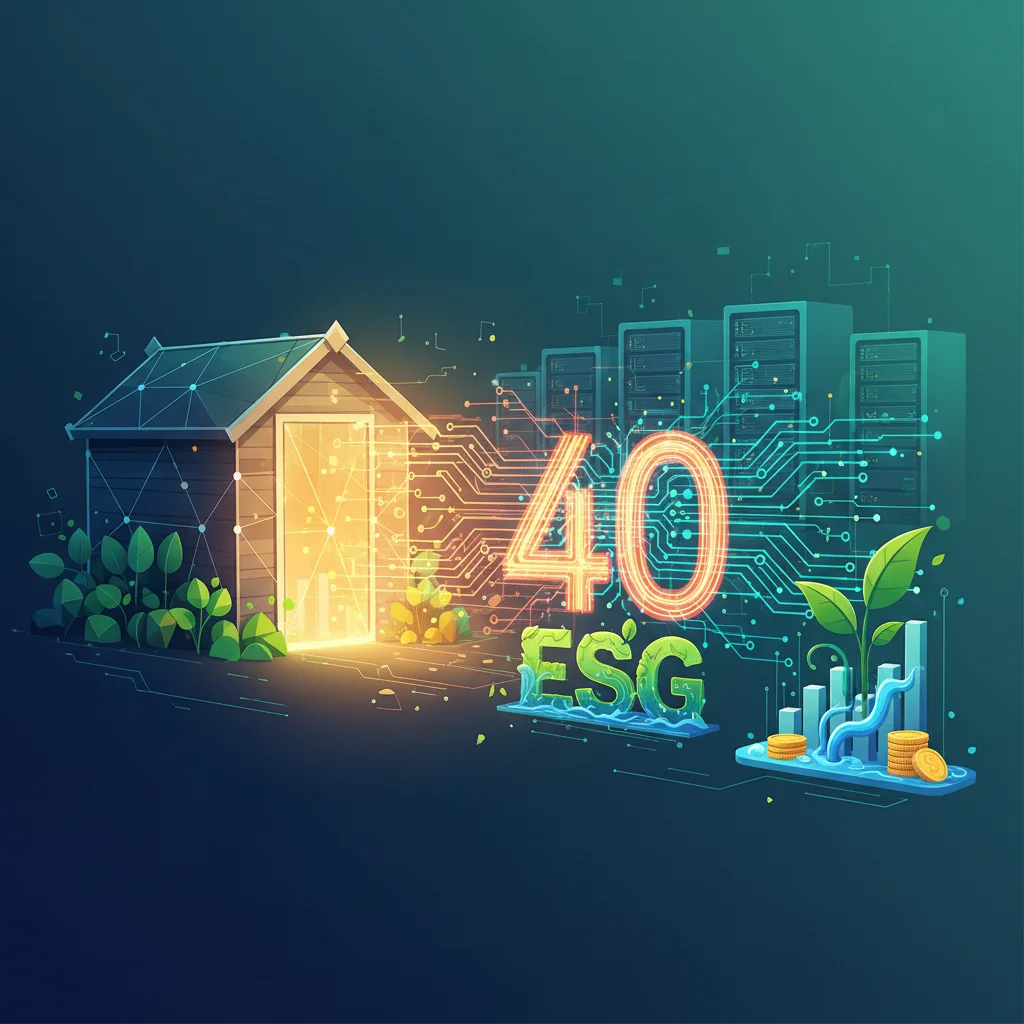
The £40 Heating Bill: How a Garden Shed Is Disrupting Data Centre Economics and Creating a New ESG Investment Frontier
In a world where headlines are dominated by macroeconomic trends and shifts in the global stock market, the most profound innovations often begin in the most unassuming of places. Consider the humble garden shed. For most, it’s a space for lawnmowers and forgotten paint cans. But for Terrence Bridges in the English town of Sidmouth, his shed has become a beacon of financial and environmental ingenuity, slashing his heating bills to a mere £40 a month. How? By hosting a small data centre that warms his home with its recycled heat.
This isn’t just a quirky local news story; it’s a powerful micro-case study illustrating a seismic shift in how we think about technology, energy, and finance. It represents a tangible convergence of financial technology (fintech), sustainable investing, and decentralized infrastructure. For investors, business leaders, and anyone involved in the modern economy, the principles at play in Mr. Bridges’ shed have far-reaching implications for operational costs, ESG mandates, and the very architecture of our digital world.
The Invisible Engine: Understanding the Data Centre’s Economic Burden
Before we can appreciate the genius of heating a home with a computer, we must first understand the problem it solves. Data centres are the invisible engines of the global economy. Every time you execute a trade, use a banking app, access a financial report, or leverage a fintech platform, you are relying on a vast, power-hungry data centre somewhere in the world. They are the physical backbone of our increasingly digital financial system.
This immense processing power comes at a staggering environmental and financial cost. Data centres are notorious for their energy consumption. Globally, they are estimated to account for 1-1.5% of all electricity usage, a figure that rivals the entire aviation industry’s carbon footprint (source: International Energy Agency). For a financial institution, energy can be one of the largest operational expenditures (OpEx) for their IT infrastructure, directly impacting profitability.
The core issue is heat. Servers generate an enormous amount of thermal energy as a byproduct of their calculations. To prevent overheating and failure, data centres must then spend even more energy on massive cooling systems—air conditioning, liquid cooling, and complex airflow management. In essence, they pay once to power the servers and a second time to remove the heat that power generates. It’s a fundamentally inefficient model that the tech and finance industries have accepted as a necessary evil. Until now.
The Great Unbundling: Why Private Equity is Carving Up Europe’s Industrial Empires
A Paradigm Shift in a Box: The Decentralized Heat-as-a-Service Model
Enter UK-based company Heata. Their innovative solution, installed in Terrence Bridges’ shed, turns the data centre’s greatest liability—waste heat—into a valuable asset. The concept is simple yet revolutionary. Heata provides homeowners with a small, secure computing unit that connects to their existing hot water cylinder. This unit performs data processing tasks for clients, such as Ordnance Survey, who need significant computational power for tasks like 3D mapping.
The heat generated by the server’s processor, instead of being vented away by a noisy fan, is efficiently transferred into the home’s water system, providing free hot water. As Mr. Bridges states, “It’s fantastic because it’s eco-friendly…We’re not burning any gases.” This simple quote underscores a profound economic truth: waste is just a resource we haven’t found a use for yet.
This model creates a symbiotic relationship:
- The Homeowner: Receives free or heavily subsidized heating, reducing their energy bills and carbon footprint.
- The Client (e.g., a bank, trading firm, or research company): Gets access to cost-effective, distributed computing power without the overhead of building and cooling a traditional data centre.
- The Environment: Energy is used twice—once for computation and once for heating—dramatically improving overall efficiency and reducing the carbon emissions associated with both computing and domestic heating.
To better understand the disruptive potential of this model, let’s compare it to the traditional centralized data centre approach.
| Metric | Traditional Centralized Data Centre | Decentralized Heat-Recycling Model (Heata) |
|---|---|---|
| Capital Expenditure (CapEx) | Extremely high (land, building, security, grid connection) | Low (small, mass-produced units) |
| Energy Costs (OpEx) | Very high (power for servers + power for cooling) | Significantly lower (no dedicated cooling costs) |
| Environmental Impact | Large carbon footprint from energy use and cooling | Near carbon-neutral computation; reduces household gas consumption |
| Scalability | Lumpy and slow; requires new construction | Granular and rapid; scales one home at a time |
| Waste Product | Waste heat (a costly liability) | Hot water (a valuable asset) |
The Investment Thesis: ESG, Edge Computing, and the New Economy
For the astute investor or business leader, the story of the £40 heating bill is a powerful signal pointing toward several major trends in finance and technology.
1. The Rise of Practical ESG Investing
Environmental, Social, and Governance (ESG) investing has moved from a niche interest to a core pillar of modern portfolio strategy. However, it often faces criticism for being abstract. This model provides a concrete, measurable ESG outcome. Every computational cycle performed reduces carbon emissions. It’s a direct investment in the circular economy, offering clear, reportable metrics that appeal to both regulators and a new generation of socially conscious investors. Financial institutions under pressure to improve their ESG scores could become major clients or investors in such technologies.
2. The Inevitable Move to the Edge
This is a real-world example of “edge computing.” Instead of sending data to a massive, centralized cloud, processing is done closer to where it’s needed. While this model uses the “edge” for heat, the principle is key for the future of fintech. High-frequency trading, real-time fraud detection, and personalized banking services require ultra-low latency. A distributed network of micro data centres, perhaps one day in every city block, is the logical endpoint of this trend. According to some market analyses, the global edge computing market is projected to grow to over $274 billion by 2030 (source: Grand View Research), and innovative energy solutions will be critical to this expansion.
3. A New Look at Infrastructure and Blockchain
The concept of decentralization is the very heart of blockchain technology. While this application isn’t a blockchain itself, it builds the kind of distributed physical infrastructure on which a truly decentralized economy could run. Imagine a future where blockchain validation nodes (which also consume significant energy) are run on a similar network, with the waste heat being productively used. This solves the energy consumption critique often leveled at cryptocurrencies and provides a more resilient, decentralized hardware layer for the entire financial technology ecosystem.
Conclusion: From a Single Shed to Global Impact
The story of Terrence Bridges and his data-centre-heated home is more than a feel-good piece about saving on bills. It is a microcosm of a fundamental shift in economic and technological thinking. It proves that the biggest liabilities in our current systems—like the immense waste heat from the digital economy—can be transformed into our most valuable assets.
For finance professionals, it highlights a new frontier for reducing operational costs and meeting ESG mandates. For investors, it signals a burgeoning market in sustainable technology and decentralized infrastructure. For business leaders, it is a lesson in the power of first-principles thinking to disrupt established industries. The future of high-performance computing, it turns out, may not be in vast, remote warehouses, but in the quiet, productive warmth of a million garden sheds, fundamentally reshaping our energy consumption and our economic models from the ground up.


